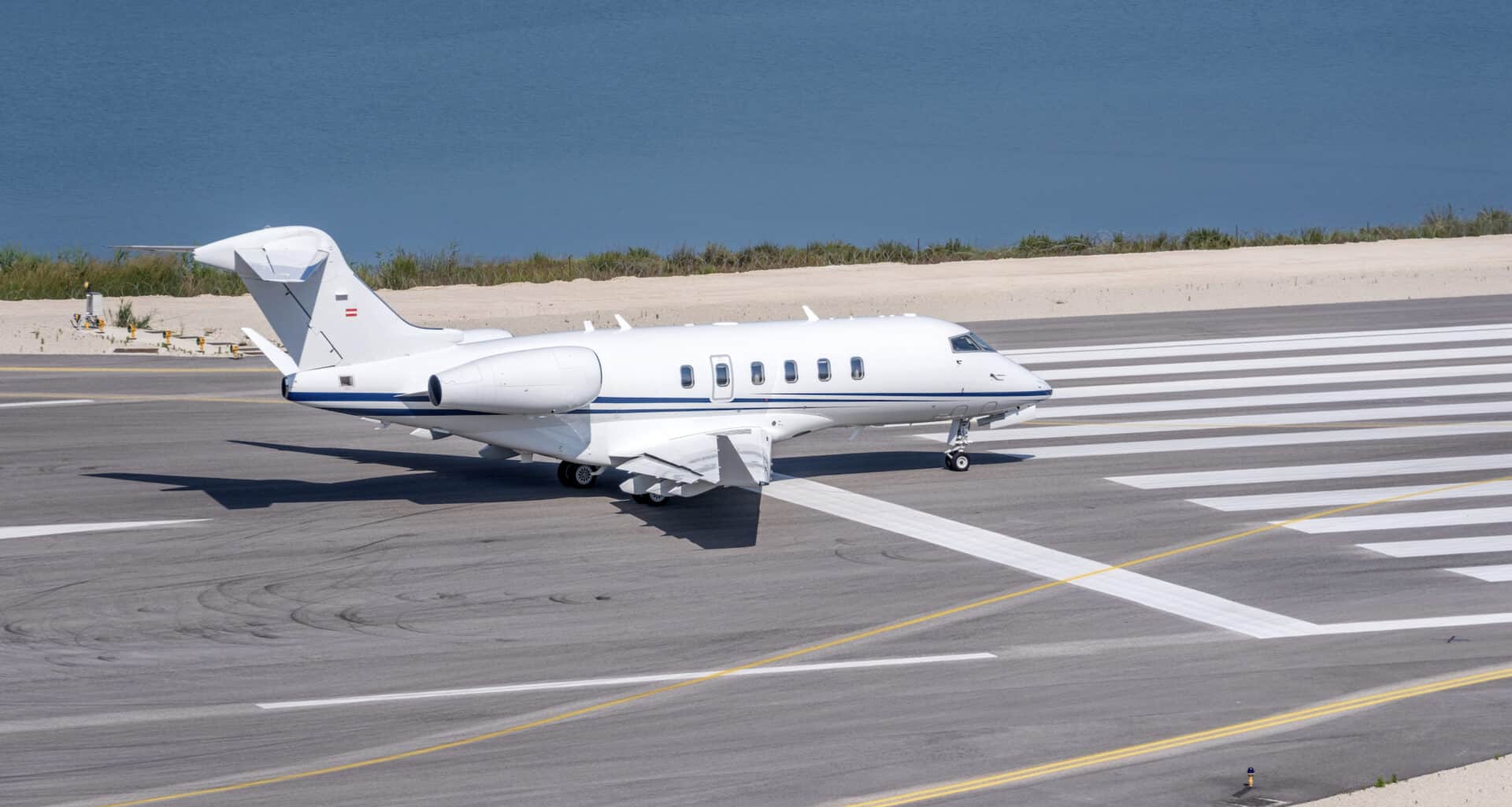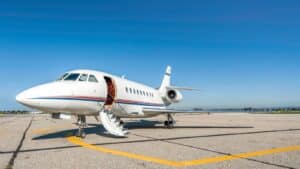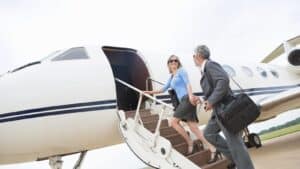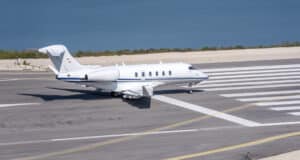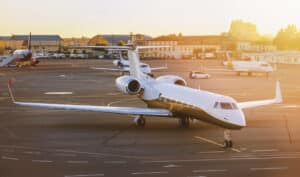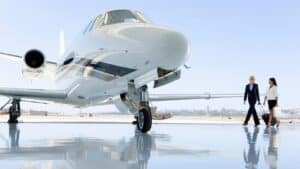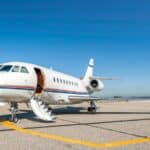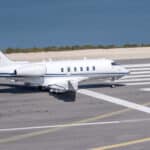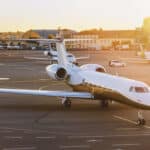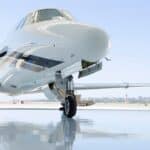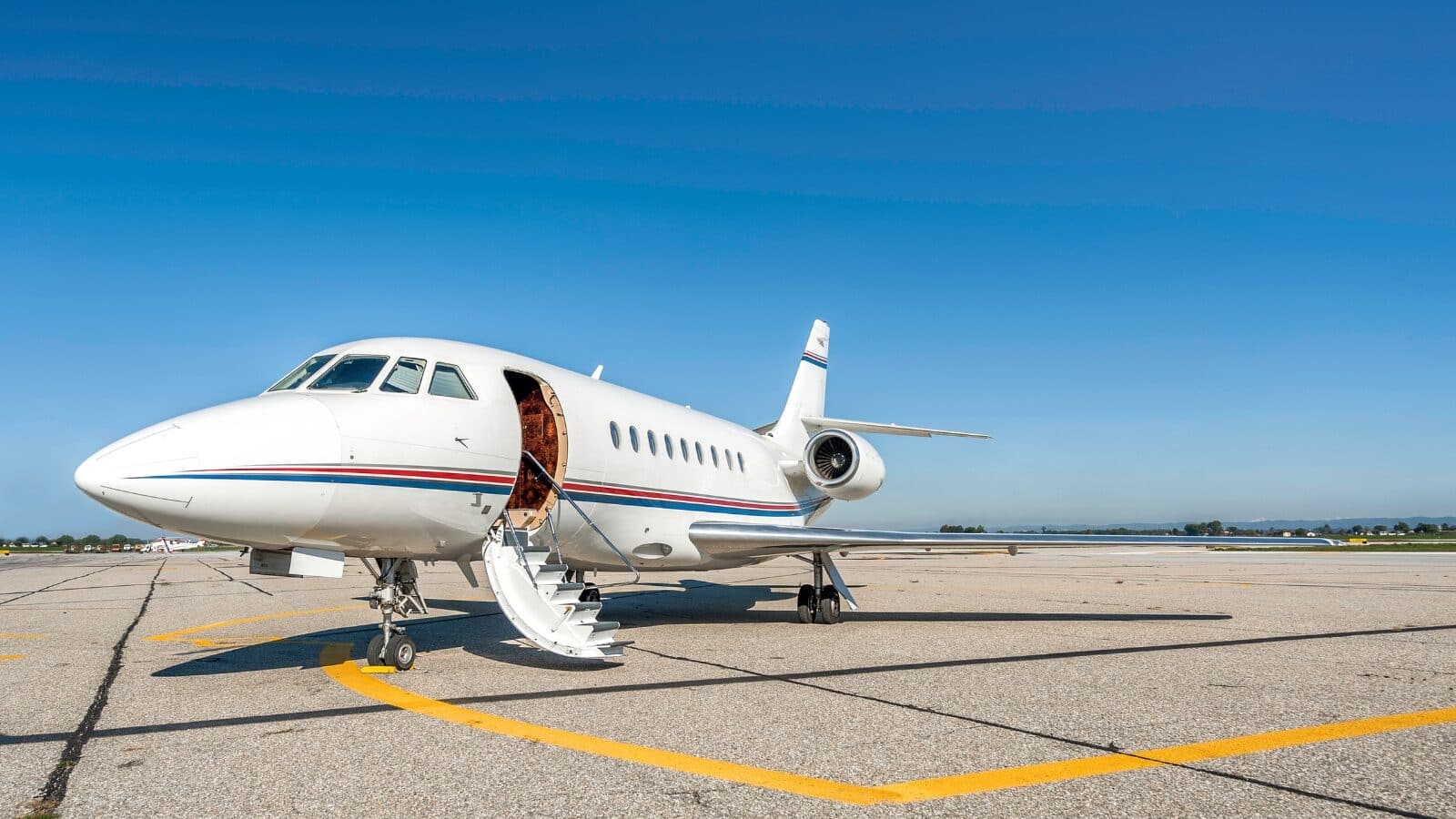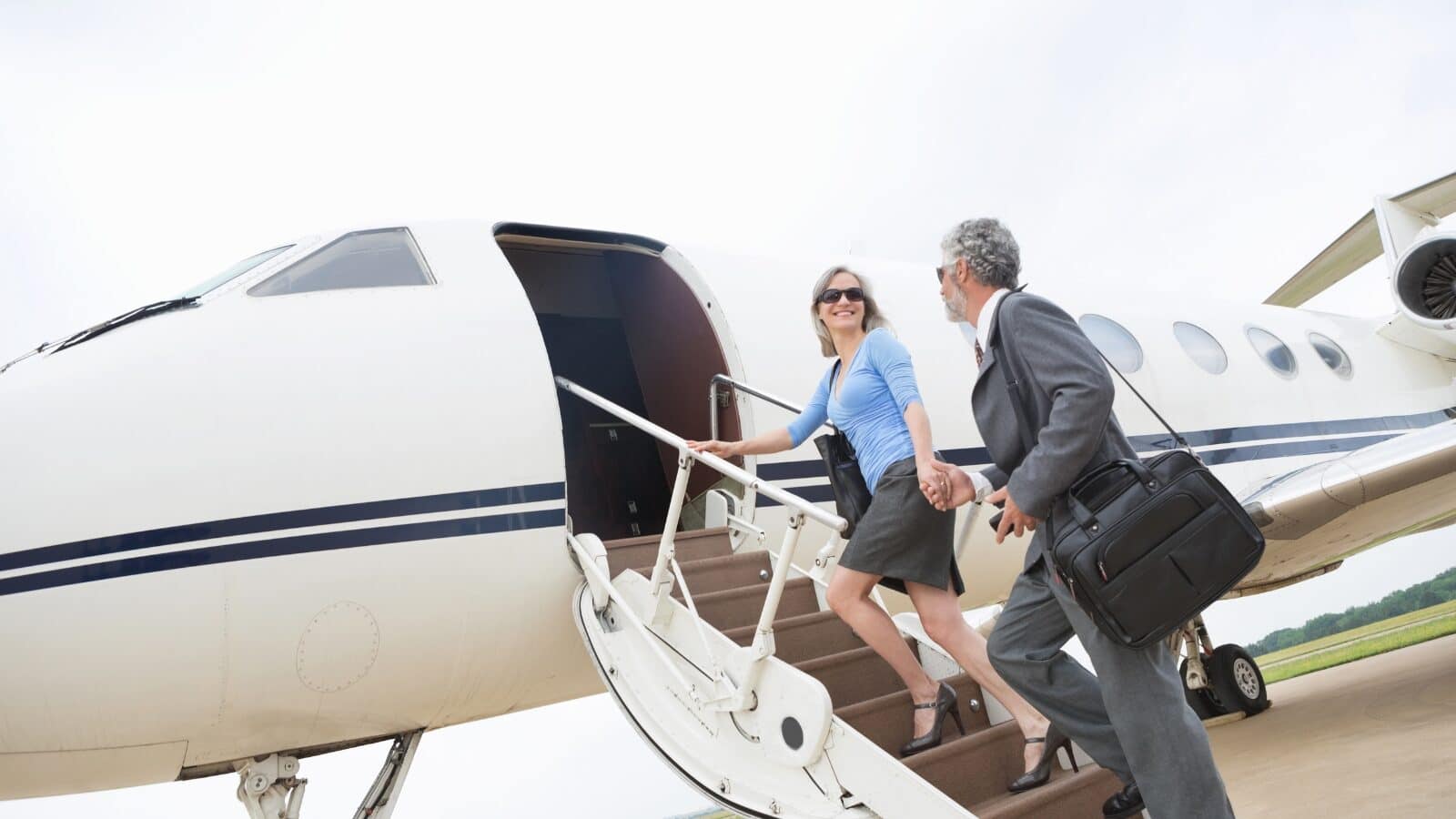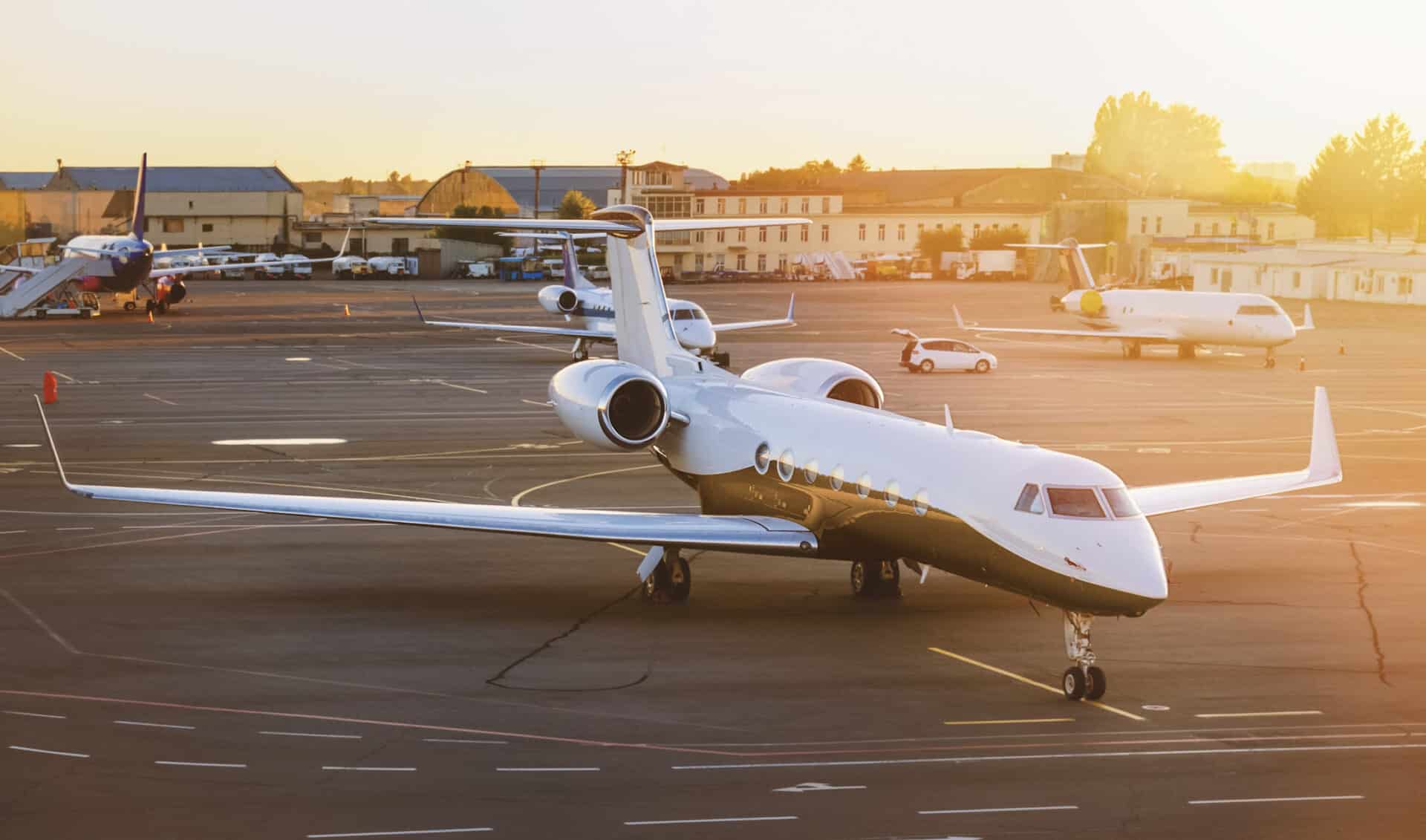Private jet charter costs in 2025 range from $2,000 to $18,000 per hour depending on aircraft size, route distance, and operational requirements. For travelers considering private jet rental for the first time, understanding the complete pricing structure helps make informed decisions about this luxury travel option.
The aviation industry has seen pricing stabilize after post-pandemic fluctuations. Leading charter operators like Global Charter and other certified providers now offer more transparent pricing models, though costs vary significantly based on multiple factors beyond the hourly rate.
Private Jet Hourly Rates by Aircraft Category
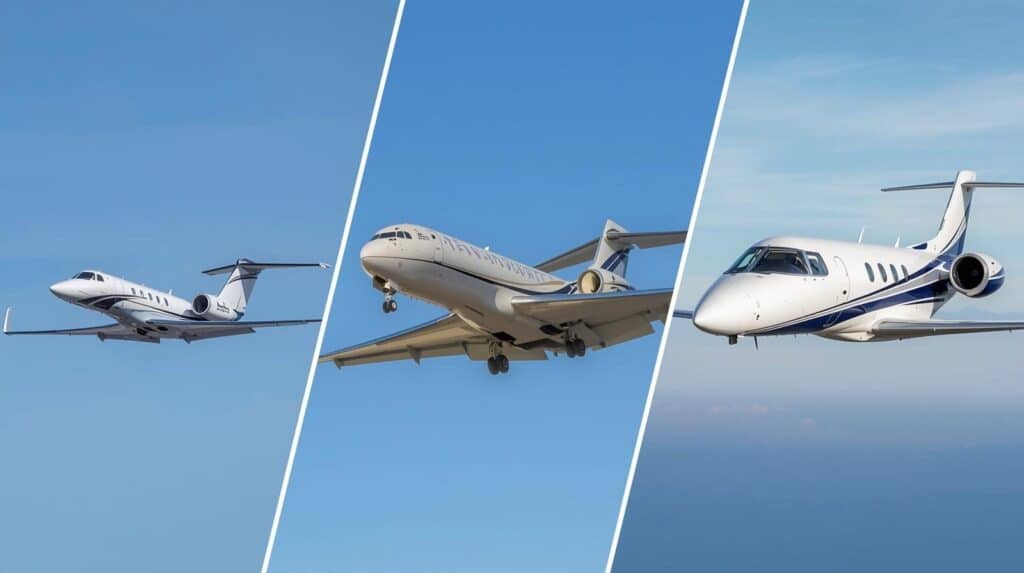
Charter pricing starts with the aircraft category. Each type offers different passenger capacity, range capabilities, and comfort levels.
Light jets serve short-haul flights efficiently. These aircraft seat 4-8 passengers and operate within 2-3 hour flight ranges. Hourly rates typically run $2,500 to $4,500. Understanding private jet cost per hour helps travelers budget accurately for their aviation needs.
Midsize jets balance comfort with operational efficiency. With seating for 7-9 passengers and 5-hour range capabilities, these aircraft cost $4,500 to $7,500 per hour.
Super midsize jets deliver transcontinental range. Operating costs reach $7,500 to $12,500 hourly for 8-10 passenger configurations with enhanced amenities.
Heavy jets and ultra-long-range aircraft command premium pricing. These jets accommodate 10-19 passengers for intercontinental flights, with hourly rates from $15,000 to $25,000 or higher for flagship models like the Gulfstream G650 and Bombardier Global 7500. For travelers considering more economical options, exploring small private jets reveals excellent value propositions for regional travel needs.
| Aircraft Category | Passenger Capacity | Typical Range | Hourly Rate (USD) |
|---|---|---|---|
| Very Light Jets | 4-5 passengers | 1,000-1,500 miles | $2,000 – $3,500 |
| Light Jets | 5-8 passengers | 1,500-2,500 miles | $2,500 – $4,500 |
| Midsize Jets | 7-9 passengers | 2,500-3,500 miles | $4,500 – $7,500 |
| Super Midsize Jets | 8-10 passengers | 3,500-4,500 miles | $7,500 – $12,500 |
| Heavy Jets | 10-16 passengers | 4,500-7,000 miles | $10,000 – $18,000 |
| Ultra-Long-Range | 12-19 passengers | 7,000+ miles | $15,000 – $25,000+ |
Understanding Total Private Jet Charter Costs
The hourly rate represents just one component of private jet charter pricing. Smart travelers account for additional expenses that significantly impact the final invoice.
Billable flight time includes more than air time. Operators calculate charges from engine start to engine shutdown, plus taxi time at both departure and arrival airports. Most charters enforce a 2-hour daily minimum, even for shorter flights.
Repositioning fees apply to one-way bookings. When an aircraft needs to return to base or travel to your departure point, these empty legs get factored into your quote. Planning same-day round trips within crew duty limits often reduces these costs substantially.
Federal Excise Tax (FET) adds 7.5% to all domestic U.S. flights. The IRS also collects a $5.20 segment fee per passenger for each takeoff and landing in 2025. These taxes are mandated by FAA regulations governing commercial air transportation. International trips incur separate customs, landing permits, and overflight fees ranging from $500 to $5,000 depending on destination.
Airport and handling charges vary dramatically by location. Popular private terminals at Teterboro, Van Nuys, or Miami-Opa Locka charge premium rates. Smaller regional airports often provide more economical alternatives with comparable service quality. Travelers can research top-rated charter operators in New York or explore premium private jet services in Miami to compare regional pricing and service options.
Sample Route Costs
Real-world pricing demonstrates how these factors combine:
- New York to Miami (light jet, 2.5 hours): $9,000 – $15,000 one-way
- Los Angeles to Las Vegas (light jet, 1 hour): $4,500 – $8,000 one-way
- Chicago to Dallas (midsize jet, 2.5 hours): $15,000 – $25,000 one-way
- New York to Los Angeles (super midsize, 5-6 hours): $40,000 – $70,000 one-way
These estimates include base charter rates and standard fees. Custom catering, ground transportation, and specific aircraft requests may increase costs further.
How Much Does Jet Fuel Cost in 2025?
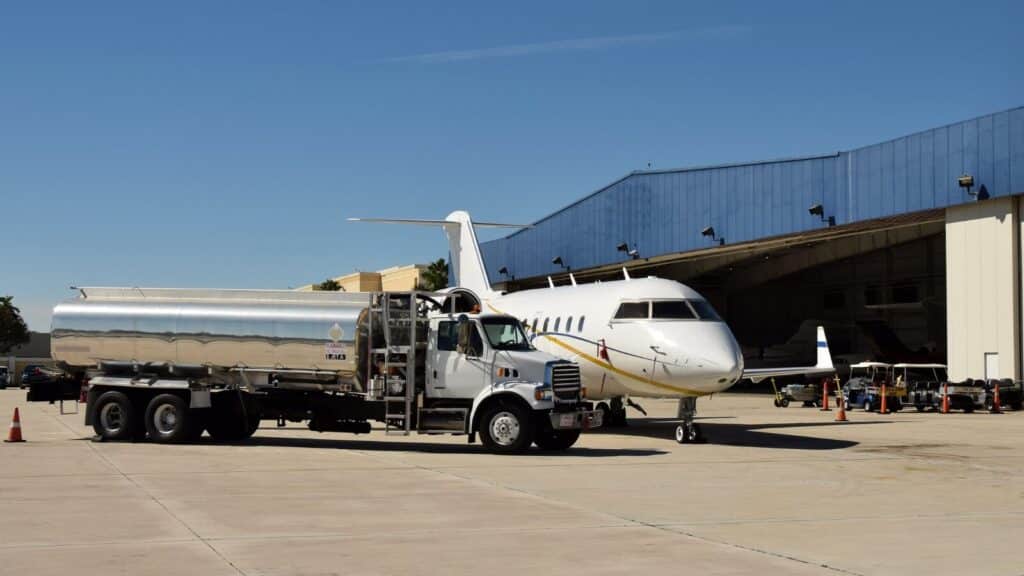
Jet fuel prices directly influence charter rates through fuel surcharges. Understanding current fuel economics provides context for pricing fluctuations throughout the year.
The national average for Jet-A fuel in the United States stands at $6.28 per gallon as of October 2025. Regional variations create significant price differences across the country. The Bureau of Transportation Statistics tracks aviation fuel costs and reported commercial airline fuel prices at $2.42 per gallon in January 2025, though private aviation typically pays higher retail rates at fixed-base operators.
Alaska reports the highest costs at $8.11 per gallon due to limited supply chains and remote locations. The FAA Central region offers the lowest prices at $5.53 per gallon, benefiting from proximity to major refineries.
Fuel consumption rates vary by aircraft category:
- Light jets: 120-160 gallons per hour
- Midsize jets: 190-250 gallons per hour
- Heavy jets: 330-500+ gallons per hour
- Ultra-long-range: 500-1,000+ gallons per hour
A 3-hour midsize jet flight consuming 225 gallons per hour burns approximately 675 gallons total. At $6.28 per gallon, fuel costs alone reach $4,239 for that single flight segment.
| Aircraft Type | Fuel Burn (GPH) | 2-Hour Flight Fuel Cost | 5-Hour Flight Fuel Cost |
|---|---|---|---|
| Light Jet | 140 gallons/hour | $1,758 | $4,396 |
| Midsize Jet | 220 gallons/hour | $2,763 | $6,908 |
| Heavy Jet | 400 gallons/hour | $5,024 | $12,560 |
| Ultra-Long-Range | 750 gallons/hour | $9,420 | $23,550 |
Based on average Jet-A fuel price of $6.28/gallon
Factors That Impact Private Jet Rental Costs
Multiple variables beyond aircraft selection affect your final charter price. Industry professionals consider these elements when preparing quotes. For additional insights on pricing structures, charter operators provide detailed cost breakdowns that help travelers understand the full scope of private aviation expenses.
Booking timing plays a crucial role. Peak travel periods around holidays, major sporting events, and summer vacation season see increased demand. Charter rates can rise 20-40% during these windows. Flexibility with departure dates often yields better pricing.
Aircraft age and condition influence hourly rates. Newer jets with modern avionics, updated interiors, and enhanced amenities command $100-$1,000 per hour premiums over older models. However, well-maintained legacy aircraft still deliver excellent service at lower price points.
Crew duty regulations impact multi-day trips. Federal Aviation Regulations limit flight crew duty hours. Extended itineraries requiring crew rest periods or positioning crews add overnight expenses to your total costs.
Customized services increase pricing accordingly:
- Premium catering: $600-$1,000 for lunch service for four passengers
- Ground transportation: $100-$1,000+ depending on vehicle class and distance
- Pet accommodations: $200-$500 per flight segment
- Special amenities: WiFi upgrades, entertainment systems, or medical equipment as needed
Alternative Private Aviation Options
Beyond traditional on-demand charters, several ownership and membership models offer different value propositions for frequent flyers.
Jet cards provide guaranteed availability with fixed hourly rates. Average rates reached $11,273 per hour in Q2 2025, representing a 2.9% increase year-over-year. Cards typically require 25-100 hour commitments, offering predictable pricing without long-term ownership obligations.
Fractional ownership programs allow purchasing shares of specific aircraft. Operators like NetJets and Flexjet manage the asset while owners access guaranteed availability. Costs include the initial share purchase (typically 1/16th to 1/2 ownership), monthly management fees, and hourly operating rates.
Empty leg flights present opportunities for significant savings. These repositioning flights occur when aircraft return to base or travel to pick up scheduled passengers. Discounts of 50-75% off standard charter rates make empty legs attractive for flexible travelers who can adjust schedules. For cost-conscious flyers, reviewing affordable private jet options reveals additional strategies for accessible private aviation.
Membership programs offer tiered access without aircraft ownership. Entry-level memberships provide discounted charter rates and priority booking, while premium tiers include guaranteed availability and fixed pricing.
Aircraft purchase represents the ultimate commitment for high-frequency flyers. For individuals or corporations flying 300+ hours annually, acquiring an aircraft often proves more economical than chartering. The aircraft sales market offers diverse options from light jets starting around $2-3 million to ultra-long-range flagships exceeding $75 million. Buyers working with specialized aircraft sales brokers gain access to comprehensive pre-purchase inspections, valuation services, and transaction support throughout the acquisition process. However, aircraft ownership requires consideration of hangar costs, crew salaries, insurance premiums, and ongoing maintenance—expenses that can total $500,000 to several million annually depending on aircraft size and utilization.
Cost Comparison: Private Jet vs First Class
Understanding when private jet charter delivers value requires comparing total costs against commercial alternatives.
For solo business travelers on major routes, first-class tickets often cost less than private charters. A New York to Los Angeles first-class ticket runs $800-$2,000, while a private light jet costs $40,000-$70,000 for the entire aircraft.
The economics shift dramatically for groups. Eight executives flying New York to Miami in first class total approximately $16,000. A midsize private jet for the same route costs $12,000-$20,000, providing:
- Time savings: 2-3 hours eliminated from check-in, security, and boarding
- Schedule control: Departure timing matches business needs, not airline schedules
- Productivity: Private cabin enables confidential meetings and working sessions
- Flexibility: Same-day itinerary changes accommodate evolving business requirements
Regional Jet Fuel Price Variations
Geographic location significantly impacts operational costs. Fuel prices across different regions demonstrate substantial variations.
| Region/Country | Average Jet-A Price | Q2 2025 Price Trends |
|---|---|---|
| United States (National Average) | $6.28/gallon | Stable |
| Alaska (FAA Region) | $8.11/gallon | Premium pricing |
| Central US (FAA Region) | $5.53/gallon | Lowest mainland prices |
| United Kingdom | $2.04/gallon (wholesale) | SAF mandate impact |
| Europe (Belgium) | $2.04/gallon (wholesale) | EU blending requirements |
| Japan | $2.06/gallon (wholesale) | Stable imports |
| Brazil | $2.11/gallon (wholesale) | Currency fluctuations |
Note: International wholesale prices differ from retail FBO pricing typically paid by charter operators
How to Get the Best Private Jet Charter Price
Strategic planning reduces costs without compromising service quality. Industry insiders recommend several approaches to maximize value.
Book round trips within crew duty limits. Same-day return flights eliminate repositioning charges and overnight crew expenses. This approach can reduce total costs by 30-50% compared to booking two one-way segments.
Consider smaller airports. Secondary airports near major cities offer lower landing and handling fees. These savings often offset slightly longer ground transportation times.
Travel during off-peak periods. Mid-week flights and avoiding major holidays provide access to better availability and pricing. Tuesday through Thursday departures typically see the most competitive rates.
Request multiple quotes. Reputable charter brokers access fleets from multiple operators. Comparing 3-4 quotes for identical itineraries reveals pricing variations and negotiation opportunities.
Monitor empty leg opportunities. Specialized platforms and broker alerts notify travelers of discounted repositioning flights. While requiring schedule flexibility, these flights deliver the same service at substantial discounts.
Communicate clearly about requirements. Specifying actual passenger count, luggage needs, and amenity preferences ensures quotes match your needs without unnecessary upgrades.
The Future of Private Aviation Pricing
Industry analysts project continued evolution in private jet costs throughout 2025 and beyond. Several trends shape near-term pricing dynamics.
Sustainable Aviation Fuel (SAF) adoption increases operational costs. SAF currently costs 3-4 times more than conventional jet fuel. As EU and UK mandates require 2% blending, operators pass these costs to charter clients through fuel surcharges. According to the International Air Transport Association’s fuel price monitoring, SAF production is expected to reach 2 million tonnes in 2025, significantly impacting charter pricing structures.
Demand recovery drives pricing upward. Private flight segments have returned to near-2022 peak levels, with only isolated weekly declines year-over-year. Strong demand supports current rate structures.
Technology improvements may moderate cost increases. Newer aircraft deliver better fuel efficiency, reducing per-mile operating costs. Enhanced booking platforms increase price transparency and competition.
Fleet expansion by major operators should increase availability. More available aircraft during peak periods may stabilize seasonal pricing spikes that historically impacted summer and holiday travel.
Frequently Asked Questions About Private Jet Costs
How much does it cost to charter a private jet for a one-way trip?
One-way private jet charters range from $5,000 to $100,000+ depending on distance and aircraft size. Short regional flights in light jets start around $5,000-$15,000, while cross-country heavy jet flights reach $40,000-$70,000. Repositioning fees often apply to one-way bookings, increasing costs by 20-40% compared to round-trip pricing.
What is included in the hourly rate for private jet rental?
The base hourly rate includes the aircraft, crew salaries, insurance, and standard operational costs. It does NOT typically include fuel surcharges, landing fees, hangar fees, catering, ground transportation, Federal Excise Tax, or international handling fees. These additional costs can add 25-50% to the base hourly rate depending on the itinerary.
Is chartering a private jet cheaper than buying first-class tickets?
For solo travelers or couples, first-class tickets cost significantly less than chartering an entire aircraft. However, for groups of 6-8+ passengers, private jet costs per person often become competitive with first-class pricing while offering substantial time savings and schedule flexibility. The break-even point typically occurs around 6-7 passengers on short to medium-haul routes.
How much does jet fuel cost per gallon in 2025?
Jet-A fuel averages $6.28 per gallon nationally in the United States as of October 2025. Prices range from $5.53 per gallon in the Central region to $8.11 per gallon in Alaska. International prices vary substantially by country, with factors including local taxes, supply chains, and Sustainable Aviation Fuel mandates affecting final costs.
Can I negotiate private jet charter prices?
Yes, negotiation opportunities exist, particularly for round-trip bookings, off-peak travel, or when operators have empty legs returning near your route. Working with experienced charter brokers who access multiple operators often yields 10-20% savings through competitive bidding. Last-minute availability may also provide discounted pricing if operators want to fill empty capacity.
What hidden fees should I expect when chartering a private jet?
Common additional fees include: Federal Excise Tax (7.5%), segment fees ($5.20 per passenger per leg), landing and ramp fees ($300-$1,500 per airport), overnight crew expenses ($500-$1,000), international permits and handling ($500-$5,000), de-icing charges (seasonal, $500-$3,000), and custom catering (typically $50-$250 per person). Request an all-inclusive quote to avoid surprises.
How far in advance should I book a private jet?
For guaranteed aircraft availability and best pricing, book 1-2 weeks in advance. However, operators can accommodate last-minute requests with 3-6 hours notice, though options may be limited and pricing higher. Peak travel periods (holidays, major events) require 3-4 weeks advance booking for optimal aircraft selection and competitive rates.
Do private jet charter prices include crew and pilots?
Yes, all charter quotes include FAA-certified pilots and, for larger aircraft, flight attendants. The crew’s salaries, training, and qualifications are built into the hourly rate. However, extended multi-day trips may incur additional per diem charges for crew expenses during overnight stays away from their home base.
What is an empty leg flight and how much can I save?
Empty leg flights are repositioning flights when aircraft travel without passengers to their next assignment or return to base. These flights offer 50-75% discounts off standard charter rates. However, they require flexible schedules, limited route options, and short booking windows. The savings can be substantial for travelers who can adapt their plans to available empty legs.
How do seasonal factors affect private jet rental costs?
Peak seasons including summer months (June-August), major holidays (Christmas, New Year’s, Thanksgiving), and special events (Super Bowl, Coachella, Art Basel) see 20-40% price increases due to high demand. Shoulder seasons (September-October, April-May) offer more competitive pricing and better aircraft availability. Mid-week travel provides additional savings compared to weekends.
Conclusion
Private jet charter costs in 2025 reflect a complex interplay of aircraft selection, fuel prices, operational expenses, and market demand. While hourly rates from $2,000 to $18,000+ represent significant investment, understanding the complete cost structure enables informed decision-making.
Smart charter clients recognize that the quoted hourly rate serves as a starting point. Federal taxes, fuel surcharges, landing fees, and additional services substantially impact final invoices. Regional fuel price variations, seasonal demand fluctuations, and aircraft availability all contribute to pricing dynamics.
For business travelers valuing time efficiency and schedule flexibility, private aviation delivers measurable returns beyond mere transportation. Groups of 6+ passengers often find competitive per-person costs compared to first-class commercial alternatives, while gaining hours of productive time.
The industry continues evolving with jet cards, fractional ownership, and empty leg opportunities providing alternatives to traditional charter models. Each option serves different travel patterns and budgets, requiring careful evaluation of annual flight hours, typical routes, and scheduling flexibility.
For more information about private jet charter operators and aviation services, explore The Flying Engineer’s comprehensive directory of certified charter companies, aircraft management firms, and aviation professionals worldwide. Whether planning your first charter or comparing options for regular private travel, understanding these cost factors ensures you receive optimal value for your aviation investment.

